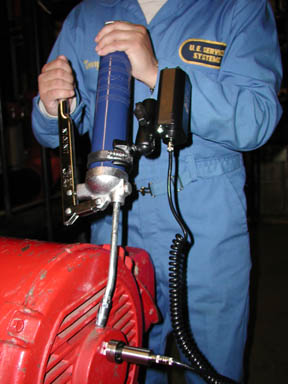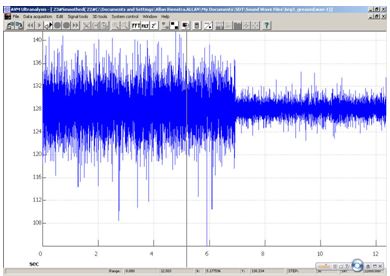Acoustic Condition Based Greasing - Lubrication
ACOUSTIC CONDITION-BASED GREASING (Lubrication)
Our Product: We render our services in ‘Acoustic Greasing of Bearings’. i.e., Ultrasound guided greasing.
In this, we grease the bearing periodically by monitoring the ultrasound of the bearing with the help of Ultrasound detector. Bearing Condition Monitoring will also be a part of this program.
Procedure:
Our Product: We render our services in ‘Acoustic Greasing of Bearings’. i.e., Ultrasound guided greasing.
In this, we grease the bearing periodically by monitoring the ultrasound of the bearing with the help of Ultrasound detector. Bearing Condition Monitoring will also be a part of this program.
Procedure:
-
You have to identify the bearings under this program & List it.
-
Trust us the periodic ‘Acoustic Greasing of Bearings’.
-
The frequency of monitoring shall be scheduled mutually based on the condition of bearing, size of bearing and manufactures guidelines.
-
Our experts will visit as per the scheduled program to your company along with the equipment, “Ultrasound Detector SDT270 with Sensor RS1N-1”
-
Our experts will then check the condition of bearings with ultrasound detector. Compare those with the previous readings of the same bearings and if found necessary, they will do acoustic greasing of the bearings in such a way that the bearings which do not require to replace grease will not be greased (over greasing is avoided, costly grease expenses will be saved). Those bearings require greasing will be greased acoustically so that only the necessary addition of grease will be done (over greasing is avoided). Those bearings needing total replacement of grease will be identified (contaminated grease condition) & total grease will be drained out and new grease will be filled in the bearing.
-
After 1st attempt of acoustic greasing, the baseline dB level of every bearing will be confirmed and recorded. The same baseline level will be parameter for comparison to check for any defect in bearing while monitoring.
-
The reports will be submitted after every schedule of acoustic greasing.
 |
 |
Traditionally, lubrication scheduling has been time-based. Equipment suppliers often recommend lubrication schedules based on hours of operation. In addition, they frequently provide instructions on the amount of lubricant to be applied during these scheduled maintenance procedures. It is common for clients to be told to lubricate at short-term intervals and to add what appears to be an excessive amount of grease. In one instance, a client was advised to lubricate motor bearings every two to three weeks and to add one ounce of grease. The origin of these suggestions leads one to speculate that they are often based on some unknown factors that have no real-world application.
Lubrication intervals are based on a simple premise; keep equipment running optimally by preventing a bearing from running dry and causing catastrophic damage.
To accomplish the goal of equipment optimization, it is best to know when to lubricate and when to cease applying lubricants to a bearing. This can be accomplished with a condition-based lubrication strategy.
If a bearing is working properly and does not demonstrate any changes that warrant adding lubrication, the bearing should be left alone. Should conditions change and a bearing demonstrate a need for lubrication, then a lubricant should be applied.
70% of all the bearing damages are lubricant related. Determining when to lubricate bearings and how much lubrication to apply are two of the perplexing issues facing technicians responsible for maintaining bearings in your company. Under lubrication can cause a bearing to wear out before its time. Applying too much lubrication often can lead to catastrophic results to the bearing or long-term damage to the equipment. Hence it is necessary and beneficial to optimize re-greasing practices by opting for acoustic greasing to save on bearing cost, grease cost and get maximum bearing life.
A condition-based lubrication program requires trending of bearing decibel levels. A baseline decibel level is set, along with (if possible) a baseline sound sample, and an inspection schedule is established for periodic testing. When a bearing sound level exceeds 8 dB with no change in the sound quality (usually a smooth, "rushing" sound), the bearing is considered in need of lubrication. A lubrication technician, while listening to the bearing, will then apply lubricant, a little at a time, until the baseline level is reached. Stopping at that point prevents over-lubrication.
